Thuja Danika is one of the most attractive and same time of simple ornamental plants. Today, gardeners and summer residents often make a choice in favor of this shrub, as it has a unique appearance and a number of other positive parties.
First of all it is worth saying that Thuja Danik is common throughout Europe. This plant was revealed back in the middle of the 20th century. Despite the fact that Thuja is growing extremely slowly, often the owners only positively belong to this culture.
If we talk about the dimensions of the plant, then often the Thuja Danik is developing up to 60 cm in height. Approximately the same value corresponds to the diameter of the car. It can be concluded that the plant is really miniature, and perhaps this is exactly what it attracts gardeners.
Also, if we talk about the peculiarities of this decorative plant, it is worth noting that thuja is characterized by a decorative appearance throughout the year. It is green and in winter, and in the summer, which positively affects the overall landscape of the site or territory. Often the landing of Tui Daniki occurs in large quantities. If you create a truly successful decorative composition, at least a tens of tuy should be activated. Options for combinations and location of these plants can be a huge amount, and most importantly - it is correct to take advantage of the advantage of the appearance and compactness of Tui Danika.
In this article, we will consider in detail the main features of Tui Daniki, as well as take into account the details related to planting and leaving for the plant. We will not bypass the consideration of the Tui landing options, which is very worried about the owners of country and garden territories.
Features of Tui Danika
To begin with, it is necessary to repeat the information that Datika is truly successful in terms of the decor of the Tui. It is no secret that now a number of other plants can be engaged in the site, however, Danika is capable of creating a situation that is not available for most other cultures.
Continuing to talk about the advantages of this Tui variety, I would like to note that the Danik can easily carry even the most severe frosts that are often found in the CIS. In fairness it is worth saying that this advantage is also from other thuy.
Tui shoots are short and distinguished by high location density. The color of shoots is light green. The needles is a scaly structure, it has a high thickness, softness and glitter. On the winter, the needles change slightly - a brownish shade appears.
Separately, I would like to note the other important features of Tui Danika:
- Despite the easy tolerability of low temperatures, the first wintering still makes sense to cover the shrub with some protective material. With the help of the facility, it is necessary to strict in spring and winter from the so-called "sunburn". This problem may be really serious, since in the most ordinary conditions of Thuja may suffer from bright rays of the sun.
- It is advisable directly to produce in places, at least a bit protected from wind.
- As for the soil on which the Thua Danik can grow, then, in general, this plant is not suitable for the soil, but it is desirable that it be slightly moistened. Then the growth will happen more active, and the shrub itself will be rich-green.
- In the event that the Tui landing will occur on an open sunny area, then in some cases it can negatively affect the plant. In a moderate shadow, Tuya will feel almost perfect.
I would also like to note that it is best to plant Tui Daniki near trees or other vegetation. In such conditions, our plant will be in moderate shadow. In addition, a peculiar vegetative composition will be created, which will be a really worthy decoration of the site.
Specificity landing Tui Danik
- First, it is worth noting that the choice of landing space should be based on the fact that the thuja should have access to the Sun. As we have said, the plant feels most comfortable in conditions when there is a little sun and a little shadow. If the choice is made in favor of the place where the shadow is almost always present, then the thuja will develop quite slowly, and for the decorative plant it is bad.
- It is best to make a choice in favor of peat, dry soils. You can also look at clay sand. In the event that the soil on which the Tui landing will occur is "heavy", it will be necessary to create an additional drainage layer, the thickness of which will be approximately 15 cm.
- As for the landing pit, its depth often amounts to 80 cm. In advance, the soil mixture should be prepared. It should consist of sand, delicate earth and peat (ratio of approximately 1: 2: 1). If we talk about the acidity of the soil, then for most things, it should be about 4.5-6 pp.
- Thuja falls into a predetermined recess, after which the soil mixture is added.
- Immediately after landing, it is necessary to regularly press watering. It is important to note that this process is carried out about once a week. This is a guarantee that the plant will actively develop at the very beginning, and it is the beginning of growth is the most important stage in the life of the Tui. Often landing the thuy occurs in the summer when the air temperature is too high. This suggests that watering should be carried out more often than under normal conditions.
- Tui feeding is often carried out in the spring. Complex fertilizers are involved, suitable for many other plant crops.
CARE FOR THECA DIANT
To begin with, it is worth paying attention to the fact that experts do not at all see the need for regular care. And this applies not only to this variety, but to all together. The whole thing is that this vegetation is actively developing this vegetation. Especially successfully passes the growth of the car in the event that its landing was produced at a suitable place. We talked about it earlier.
- In order not to perform a regular watering of the Tui, it must be borne in mind that the groundwater level should be relatively high for the root system. To determine whether the thua in regular irrigation needs, its condition should be analyzed for some time. In the event that things are not very good, it is necessary to start watering, or to use fertilizers. Perhaps simply was chosen not the most good place to land.
- As we have already spoken, when landing Tui in the pit is laid some amount of fertilizer. It is often enough for the active growth of the decorative plant for two years. After that, you need to hold the soil again. Accordingly, approximately every 2 years it is necessary to carry out something like that, while it is necessary and in general, to observe the Thay, it may be necessary to need to be needed before.
- Haircut of the escapes of the Tui is carried out with the help of a secateur. You can delete no more than 1/3 of the part of the escape. After the winter period, dry shoots that need to lose in the spring appear. It must be remembered that the haircut is necessary to maintain an attractive appearance of the Tui, and it is from this information that needs to be repelled in this case.
- The soil looser should also be carried out with some regularity - about once a season. The depth of loosening should be limited to 10 cm.
Separately, you need to say about additional activities related to the care of the Thuy. As we said, Thuja is unscrupuling enough to existing conditions, but it is worth paying attention to some details that we have partially mentioned earlier. For example, if the air temperature is high enough, and there has been no precipitation for a long time, it is necessary to spray the thuja leaves with warm water. And this can be carried out quite regularly, not afraid that something happens with vegetation. It is worth keeping in mind that watering and spraying are different things, and they both have tremendous meaning.
Maintaining the optimal temperature for the Tui is also an important question. The thing is that in too hot, the vegetation feels not very comfortable, so the overall growth of the Tui can slow down, although it can not affect its appearance. In this case, there is a good way out for those who grow out not in the area, but in a pot or other capacity. It is necessary to simply transfer to another place where the temperature is within 10-15 degrees Celsius. It is at such a temperature that an active growth of the Tui takes place.
If possible, in the summer period, you can create an "artificial" shadow. The essence of this idea is that too intense solar rays negatively affect the state of vegetation, and the shadow can be created by creating some kind of wood design, or planting a tree.
Diseases and pests Tui Danik
It is known that the Tui rather rarely succumb to some diseases or pests, but such facts definitely exist. Much depends on the existing conditions, including the territory, which may differ in the presence of many pests, dangerous directly for the Tui.
- The most dangerous pests can be attributed to the TRU, the web tick, leaflet, mole-blot, tower loudoys, shields and some others. Because of the ticks and the thuja, it can start yellowing, and later the general deterioration of the state of the Tui may begin.
- Cheesegging pests are also often found. Often, because of them, the leaves acquire a brown color, and directly the tops of the shoots can begin to mark them at all.
- Root pests are the most dangerous, since the root is the most important part of vegetation.
As for preventing pests, it should be paid to the fact that today in stores for gardeners you can find dozens of various funds, with which you can easily lose even the most chain by the body that harm Tue. It is important to pay attention to the fact that it is not easy to determine the diseases on the tue, since the needles are small, it is necessary to look at well. In this regard, care for many other plants is easier to produce. At least a couple of times a year, a thorough inspection of the Tui should be carried out, while paying attention to even the smallest details.
If we talk about the common diseases of the Tui Danitor, then they also have a place to be, however, you need to keep in mind that they are very rare.
- Rintel trunk. To trace the very beginning of rotting the trunk is almost impossible, but when the process has already begun, the needle begins to change its color. If this symptom has a place to be, you should immediately react so that it is not too late. Most often the reason for the root rotting is fungus. Experts recommend just to destroy it if there are other plant cultures nearby. The thing is that this disease can go to the neighboring Tui if they are present as well as many other plants. As for prophylaxis, it is recommended to occasionally carry out the thuja fungicide watering.
- Harridge roots. Again, this disease is extremely serious. It is possible to distinguish it among other ails by the fact that the needles of the thuu begins to get the gray shade. Moreover, the plant and can begin to begin at all, and the lower part of the barrel becomes sufficiently soft, and it can be treated with a finger. Again, the problem lies in the fungus, which is gradually destroyed by the core system, thereby making it almost inanimate. As in the past case, it is advisable to destroy the same, as well as replace the ground for landing, as traces of dangerous illness can remain in it. All events should be carried out quickly and decisively, since the life of the rest of the plants depends on them.
- Brown mold. This disease is manifested immediately after the snow. Surely, many seen on the plants a kind of coating of the cobweb. This is the very ailment, affecting many cultures. It is known that this disease appears under the snow, when the temperature reaches almost zero degrees. In this case, immediately remove the non-resident parts of the thuly, as well as remove the entire web, which may have managed to spread throughout the shrub. Additional processing with special means available in specialized stores.
If we talk about some common events needed to combat pests, it is worth paying attention to the preparations of Aktellik and Fufanon, which are actively used by gardeners. There is still a lot of other means, which, perhaps, in certain conditions will demonstrate greater efficiency.
Reproduction of Tui Danika
First of all, it should be borne in mind that the reproduction of the Tui occurs seeds or vegetatively. It is worth noting that the use of seeds is not a very effective option for obtaining a large full-fledged plant, since only one among the tuy is taken out in this case (about the same situation with most other plants).
Thus, it is advisable to make a choice in favor of shilling. This is the most optimal option not only because the likelihood of active growth of the Tui will be more than 70%, but also due to the fact that the owners receive exactly such a tone that they need. Accordingly, you can buy several cuttings, while having approximately the same plants that will become the best solution for the decorative component of the site.
- The overlap process begins with the removal of needles from the bottom of the shoots. Escapes must be transferred to the water where they should stay about 2 hours.
- The cuttings are advisable to land in a small greenhouse (translucent capacity) together with the substrate, which consists of a turf with peat and sand (1 to 1).
- Immediately before landing in the soil, it is necessary to disinfect the cuttings with the help of manganese. After that, there will be no pests there, which can cause serious damage to the plant.
- With the germination of cuttings in a small pot, you should also take a glass container and cover it with cuttings. Such a greenhouse must be regularly ventilated, otherwise the plant will stop developing and starts to actively rotate.
- Also in the greenhouse need to carry out a slight spraying of the future Tui. To do this, you need to arm the spray and warm water.
- Despite the fact that already at this stage, the thua can give roots, it should be borne in mind that it is still very early to transplant in full-fledged soil. It should be done so that the plant gains a sufficient root system necessary for further growth in the conditions of the open section.
- Gradually, the cuttings need to be left open (without capacity from the top), more and longer so that they are gradually adapted to existing conditions.
- Next, there is an active hardening of future thuy. To do this, we need to wait for warm weather and regularly carry cuttings into the street. Peculiar "air baths" will positively affect not only the development of cuttings, but also their endurance to external conditions.
- Now, when the time comes to land the cuttings (approximately after winter, or in the fall), it is necessary to pay special attention to the care of vegetation. Despite the fact that cuttings can be quite persistent to existing conditions on the site, intensive care should be applied. With its help, the cuttings will take place much faster, and the growth itself will be actively passing.
- Closer to the end of the autumn it is necessary to carry out the insulation of small tuy, and for this it is necessary to cover with spruce sweets or leaves, sawdust or special materials available in garden stores.
It is necessary to pay attention to the fact that when planting the needle of the thuu should not touch the Earth. That is why it is necessary to carry out a rather large trimming of the lower part of the plant. In the event that the needle still has contact with the Earth, the gradual posture is to avoid it is unlikely to succeed. You should also not forget that on sale you can find a huge number of mixtures and other products that will significantly speed up the growth of the Tui.

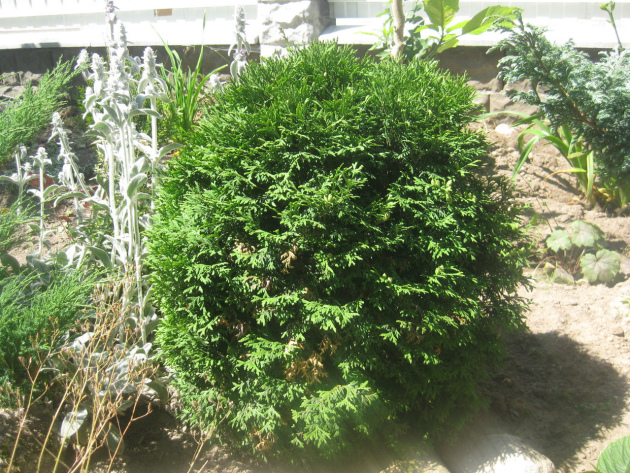

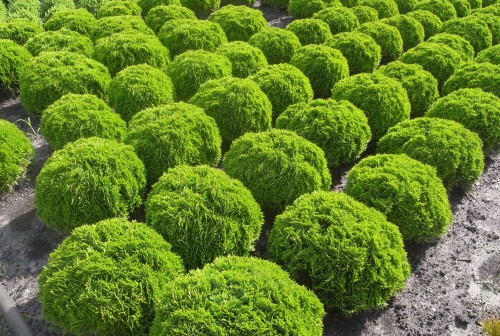
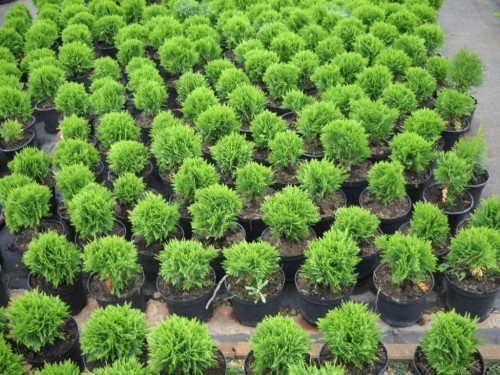
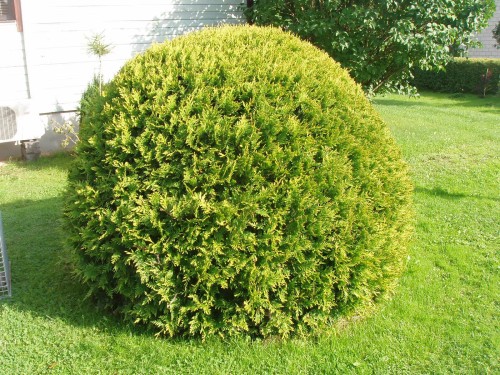
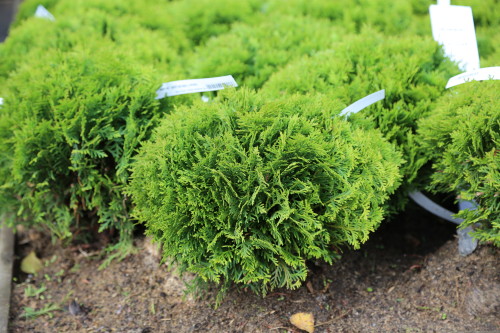












 Start a discussion ...
Start a discussion ...